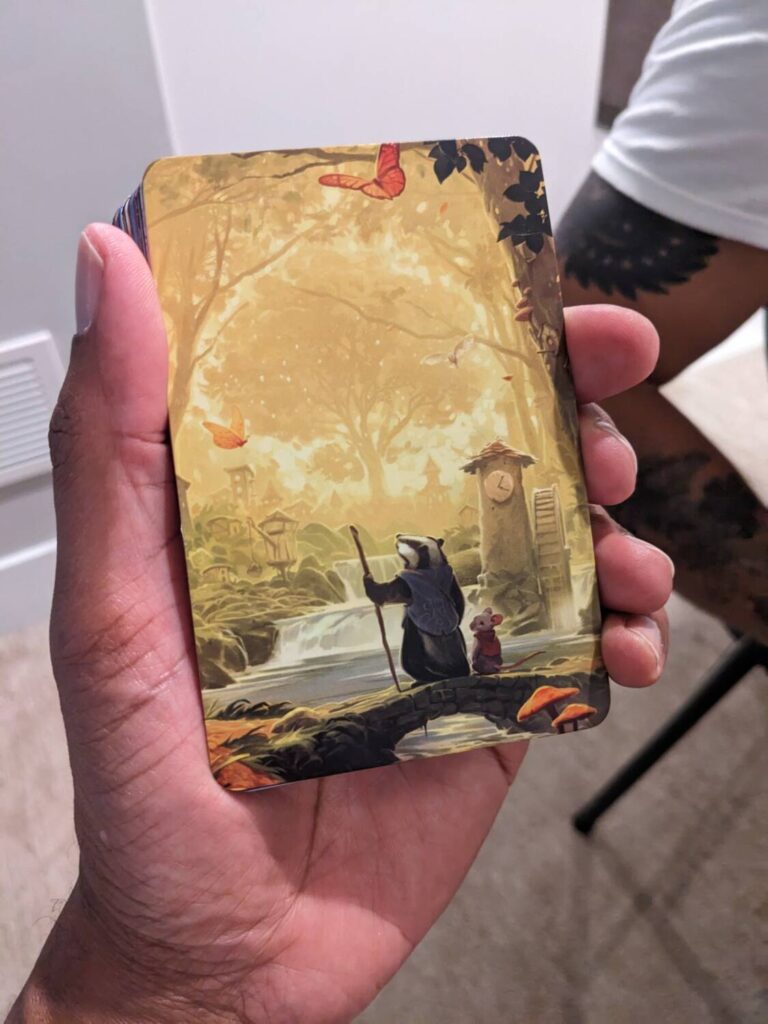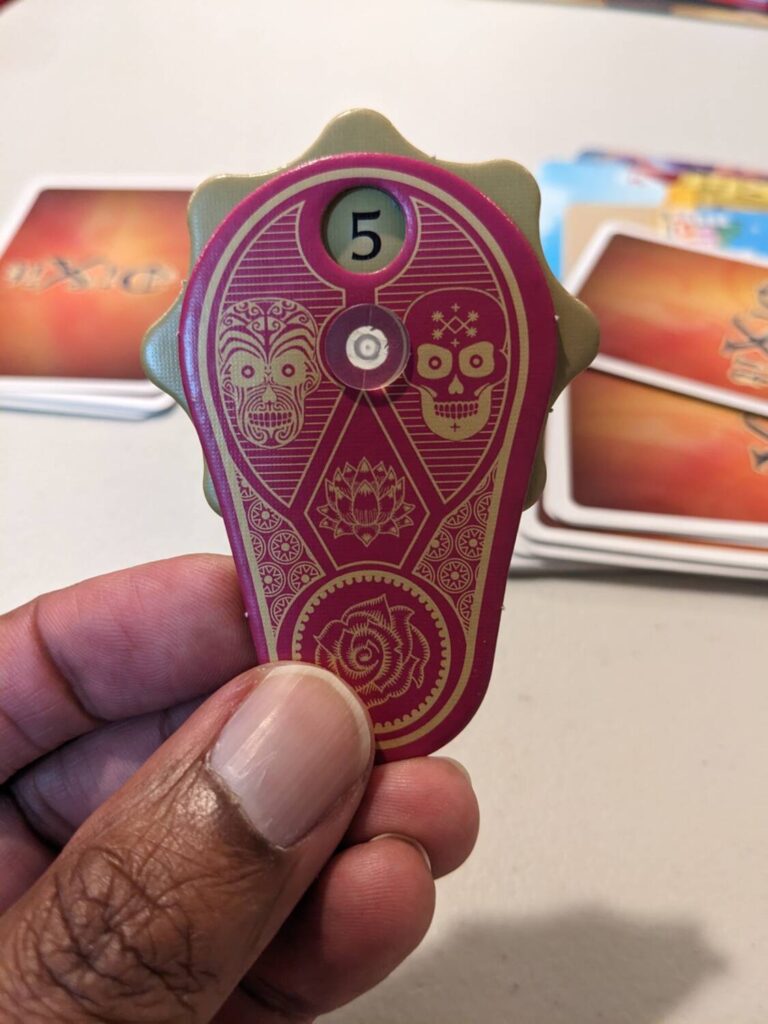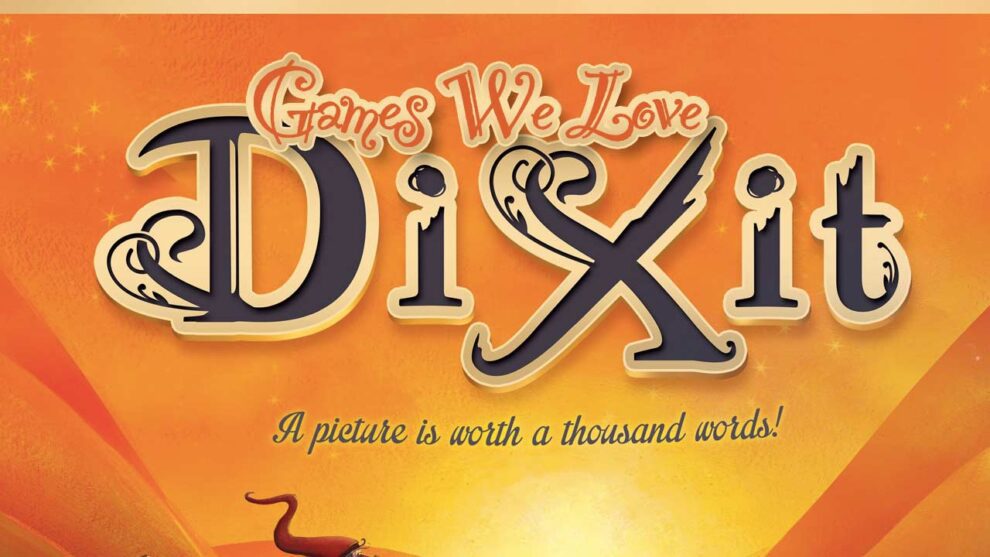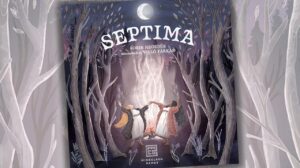My journey to write an article about Dixit began when someone on our writing team discovered that we had not previously covered the original game. (We have written a review of Stella: Dixit Universe, however.)
This was a shock, to both me and many of the other contributors on the Meeple Mountain team. That is because Dixit—first released in 2008—is such a classic that people just assume everyone has played it.
And, almost every gamer I know has played Dixit…which led to a player objecting over getting it to the table for review plays for this article.
“Nah, I’m not playing Dixit.”
Dixit has reached an interesting point in its lifecycle—it is the word association version of CATAN. By that, I mean that Dixit is so good, and such an important cog in the history of these types of games, that players have played it so much that they often DON’T want to play it any more.
I was shocked how often I proposed this game to my gaming groups during the months leading up to this post, with players responding that they didn’t want to play it any more, a bit like proposing Codenames, Pandemic, or other classics that have hit the table so much that players are a bit burned out just by hearing the title.
I go the other way. I’ll play CATAN, Codenames, or Pandemic any time they are offered, because each one is incredible. The same goes for Dixit, especially when I can get a large group together to play a fun party game.

Be Good, But Not Too Good
The original version of Dixit is a 3-8 player word/phrase association game that takes about 30 minutes to play. Each round, a player has a hand of six abstractly-drawn cards—featuring images drawn by Marie Cardouat—and each card shows a wide variety of images that always remind me of the pictures from the game Mysterium. (I played Mysterium when it was first released in 2015, then did my first play of Dixit, hence the timing reference.)
One player is made the active player, and on that person’s turn, they secretly select one card from their hand and give a good, but semi-vague, clue about the image of their card.
Let’s say your card has a bird flying through the sky. You offer the following clue: “Freedom is a gift.” It might hint that a bird is flying around, but it doesn’t specifically reference the bird or the sky or the action depicted on the card. Better still, other players will likely have a card that could be interpreted to hint at the gift of freedom also.
Based on the active player’s clue, each opponent selects one card from their hand and places them face-down in the middle of the table. These cards, along with the active player’s card, are shuffled then placed randomly around the score track board in view of all players. All non-active players vote on which card is most like the active player’s clue.
When votes are revealed, points are scored. If all players—or, no players—select the active player’s card, the active player doesn’t score any points and everyone else scores two points. If any other situation occurs, where some players pick the “right” card (the active player’s card) and some pick other cards, the active player and anyone who picked the right card get three points.
In either case, any of the non-active players whose cards were selected by other players earn one point per vote for their cards. The first player to get to 30 points wins.

Dixit has sold over 12 million copies and spawned its own cottage industry—BGG lists more than 50 expansions for the base game, mainly in the form of promotional cards that show up different artwork for the base game and its many add-ons. Dixit: Journey, Dixit: Odyssey, Dixit: Disney Edition, and Stella: Dixit Universe are some of the “expandalone” versions of the base game, but the rules always remain the same with boxes that have artwork from different artists.
For this article, I used my new copy of Dixit: Cérémonie. This version was sold to attendees at the 2024 Festival International des Jeux, as well as being offered as a review copy for members of the media at the show. The main hook with Cérémonie is a very cool twist on the game’s art: all 84 cards in Cérémonie feature the box covers of other well-known board games, so for a board game junkie, it’s a blast to play a game I know well with cards I know even better. Cérémonie also uses unique rabbit meeples screen-printed in eight different colors, giving the game a nice boost to its table presence.
As cool as the new cards are, I was most concerned with the gameplay. For me—especially when gaming with friends and family who just want to laugh and have a good time, without having concerns that a game is no longer cool—Dixit still works, even if it’s a chore to sell it to core hobbyists because it is an older design. I still love it because of the accessibility and it is still great to see how players will use their cards and a few words to try and attract opponents to select their card, while being just sneaky enough to ensure that not everyone ends up voting for the active player’s card.

Dixit Still Brings Me Joy
Look, I get it—Dixit is no spring chicken. Still, it is a blast to play because it’s always a hoot to see what phrase active players will align to their card and hope that it gets just the right amount of love.
The cards are the key, because having lots of cards that are thematically adjacent makes it harder for the other players to guess the selection of the active player. Dixit, like other games where players have to use the cards they’ve been dealt to play into each round’s clue (Cards Against Humanity comes to mind here), rewards a player for finding ways to both cleverly align with the main clue and get rid of cards that appear to be less flexible and more niche for future clue rounds.
Cérémonie is such a great addition…the cards are beautiful but they get serious gamers engaged in a way that another round of Disney characters might not land as well. Cérémonie comes with a separate credits guide so that players can look up each of the game’s 84 covers to see which ones they got right.
Other games have come along that offer Dixit-like gameplay; certainly Mysterium comes to mind here, but Detective Club and even Apples to Apples also come close. I just prefer the cards in Dixit and the playtime is usually shorter than those peer games. (And, Dixit never overstays its welcome. With the full complement of eight players, you might only get each player one turn as the active player before someone hits the point threshold.)
Dixit’s major flaw? It’s not very good with three players. In fact, I usually only think of Dixit as a large (six or more) party game, because then you are getting a wider mix of cards to choose from in each round.
Otherwise, I’ll break out Dixit every chance I get, especially with the copy I own that fits well for hobbyists who know the card art. Stop letting your copy collect dust on the shelf and get it out there!












Add Comment